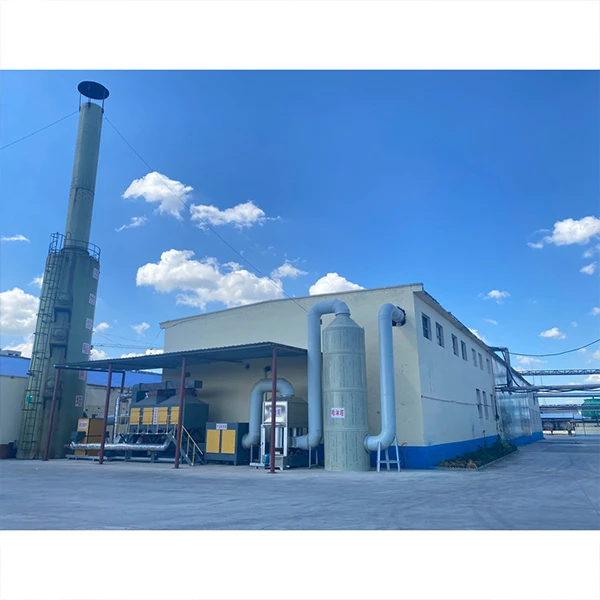HPMC for Gypsum Enhancing Performance in Construction
Hydroxypropyl Methylcellulose (HPMC) is a versatile and widely used additive in the construction industry, particularly in the formulation of gypsum-based products. Its incorporation into gypsum formulations has garnered significant attention due to its ability to improve performance characteristics, enhance workability, and ensure product stability. This article explores the role of HPMC in gypsum applications, its benefits, and its impact on the overall quality of construction materials.
Understanding HPMC
HPMC is a non-ionic, cellulose-based polymer derived from the natural polymer cellulose. It is synthesized through the chemical modification of cellulose, which imparts unique properties to the polymer. HPMC serves multiple roles, including acting as a thickener, binder, film former, and stabilizer. It is soluble in water and can form a gel-like substance, making it an ideal additive for various applications, especially in the construction sector.
Why Use HPMC in Gypsum Products?
1. Improved Workability One of the primary benefits of incorporating HPMC into gypsum products is the enhancement of workability. It allows for better mixing and application of gypsum materials, enabling contractors to apply the product more easily and uniformly. This is particularly valuable in applications such as plastering or skimming, where smooth finishes are essential.
2. Extended Open Time HPMC can significantly increase the open time of gypsum-based products. Open time refers to the duration during which the material remains workable after application. By extending this time, HPMC allows builders to work at a more relaxed pace without compromising the quality of the finish. This is particularly beneficial in larger projects or in conditions where quick setting is not feasible.
3. Water Retention Water retention is crucial for the curing process of gypsum. HPMC enhances the water-holding capacity of gypsum, which helps prevent early drying and cracking. Improved water retention ensures that the gypsum has sufficient moisture to undergo the hydration process, leading to stronger and more durable results.
4. Crack Resistance The incorporation of HPMC contributes to the crack resistance of gypsum products. The polymer helps to create a more flexible matrix within the gypsum, allowing it to better withstand stress and movement. This is especially important in regions susceptible to temperature fluctuations, where traditional gypsum products may be prone to cracking.
hpmc for gypsum

5. Enhanced Adhesion HPMC enhances the adhesion properties of gypsum formulations when applied to substrates such as drywall or plaster. This improved adhesion reduces the likelihood of delamination and ensures long-lasting applications, which is vital in maintaining the integrity of the structure.
Applications of HPMC in Gypsum
HPMC is widely used in various gypsum-based products, including
- Plaster For interior and exterior wall applications, HPMC enhances the overall performance of plaster, providing a smooth finish and improved adhesion. - Joint Compounds HPMC is commonly used in joint compounds for drywall applications. It helps achieve better consistency and workability, essential for seamless joint finishing.
- Tile Adhesives In tile setting materials, HPMC contributes to improved adhesion, flexibility, and water retention, which results in stronger and more durable installations.
- Self-Leveling Compounds HPMC is added to self-leveling compounds to enhance flow, leveling properties, and open time, allowing for easier application and better results.
Conclusion
The use of Hydroxypropyl Methylcellulose (HPMC) in gypsum applications represents a significant advancement in construction materials technology. Its ability to enhance workability, extend open time, improve water retention, and increase crack resistance makes it an invaluable additive in the formulation of gypsum products. As the construction industry continues to evolve, the importance of high-performance materials will only grow, and HPMC will undoubtedly play a key role in meeting these demands. By incorporating HPMC into their gypsum products, manufacturers can offer solutions that enhance the quality and durability of construction, ultimately benefiting contractors and end-users alike.
-
Rdp Powder: Key Considerations for Wholesalers in the Building Materials IndustryNewsJul.08,2025
-
Key Considerations for Wholesalers: Navigating the World of Hpmc - Based ProductsNewsJul.08,2025
-
Hpmc Detergent: Key Considerations for WholesalersNewsJul.08,2025
-
Key Considerations for Wholesalers: China Hpmc For Tile Adhesive, Coating Additives, Concrete Additives, and MoreNewsJul.08,2025
-
Crucial Considerations for Wholesalers: Navigating the World of Construction MaterialsNewsJul.08,2025
-
Key Considerations for Wholesalers Sourcing Additive For Cement, Additive For Concrete, Additive For Putty from Additive Manufacturer Shijiazhuang Gaocheng District Yongfeng Cellulose Co., Ltd.NewsJul.08,2025




